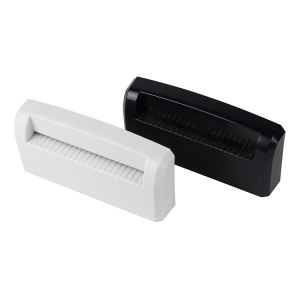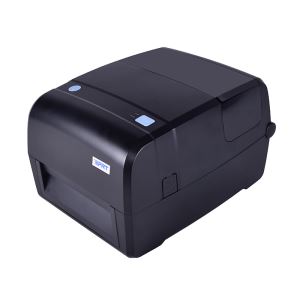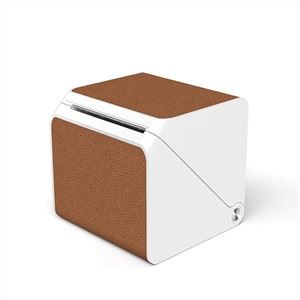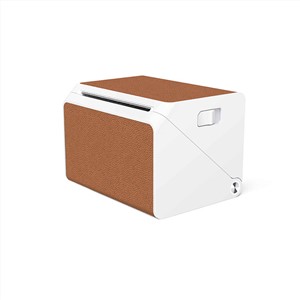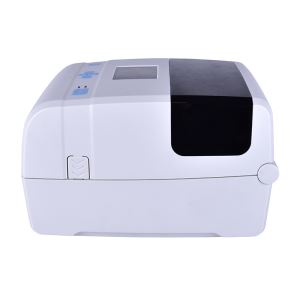The iDprt SP420 is aimed at small and home businesses that need an affordable way to print 4-by-6 shipping labels. Similar in many ways to the FreeX WiFi Thermal Printer I recently reviewed, it offers fast performance and can use a wide range of labels in various sizes from other manufacturers. Unfortunately, it has some shortcomings that make it impossible to recommend without reservation. It's most likely to be useful to you if you know how to format files for printing, or are willing to learn.
Room for Big Label Rolls
The SP420 is basically a black box, though the slightly bulging sides and top give it a more graceful shape. There's a blue release latch on each side to open the top for loading labels. The top panel includes two status lights along with a feed button on the front left corner and a transparent window so you can see how much paper is left on the current roll. It measures 7.8 by 7.1 by 9.5 inches (HWD), or roughly the same size as most of its competition, including the FreeX printer, the iDprt SP410 Printer, the Zebra ZSB-DP14, and the Editors' Choice–winning Arkscan 2054A-LAN Thermal Shipping Label Printer.
The printer is roomy enough to hold a 5-inch-diameter roll, and also has rear feed slot for using fanfold paper. Most label printers either can't hold rolls in that size range or require you to mount them in a separately purchased rear tray. Note that the SP420 can hold wider labels than the FreeX model, with support, according to iDprt, for labels from 2 inches to 4.65 inches wide (50mm to 118mm); conversely, the FreeX printer can print on smaller widths than the SP420 can handle.
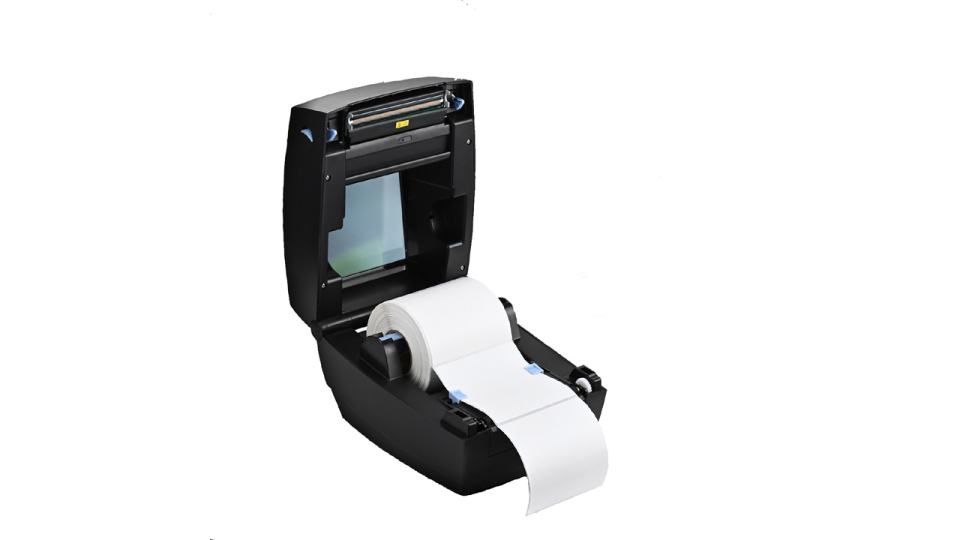
The only labels iDprt sells are 4-by-6-inch fanfold labels in stacks of 500, for $22.99 per stack, or 4.6 cents per label. However, the printer can use labels from other manufacturers, as I confirmed using both Brother and Dymo labels I had on hand.
The Good News Is Good Performance
Once I got the SP420 working, it performed well enough to almost make up for the software and installation challenges. iDprt rates the printer at 150mm per second, or 5.9 inches per second (ips). Using the standard Windows driver, and printing an image of a label from a PDF file with Acrobat, I timed it at 2.6 seconds for a single label, 12.5 seconds for 10 labels, and 54.6 seconds, or 5.5ips, for 50 labels. With the Seagull driver, it was a touch slower, at 3.4 seconds for one label, 14.0 seconds for 10 labels, and 59.7 seconds for 50 labels, or 5.0ips. By comparison, I timed the FreeX printer at 4.3ips using a USB connection, and the ZSB-DP14 at 3.5ips with its print job going through both Wi-Fi and the cloud.
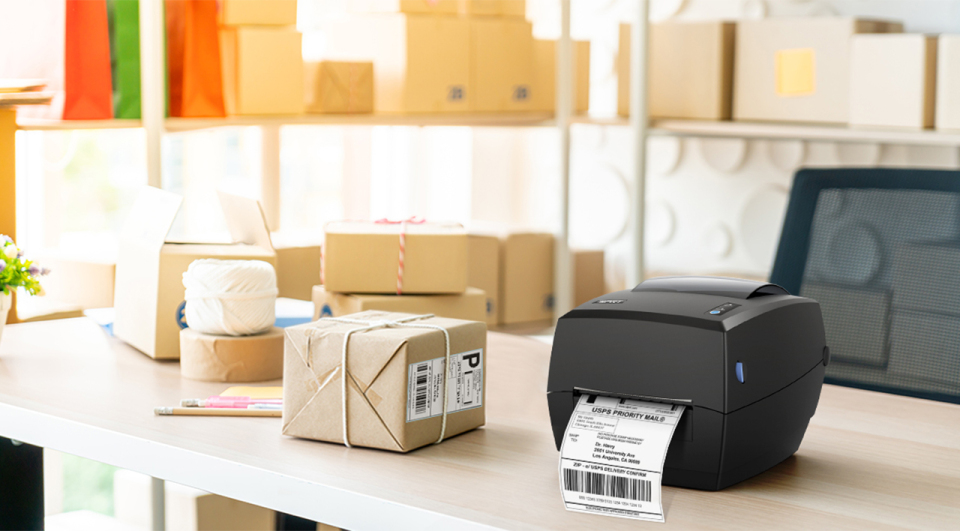
Output quality is typical for the 203dpi resolution, and more than good enough for the kind of labels the printer is meant for. Both the barcodes and text on the USPS package labels in our speed test were a suitably dark black, and even the smallest text was easily readable.
Almost Worth the Hassle
That said, be sure to check out the iDprt SP410, which shares much of the same capability, including the same rated speed, and may be less expensive on any given day. Also consider the FreeX WiFi Thermal Printer, which lacks a bundled label app but is easier to install if you limit it to USB printing. And if you want to print wirelessly, look to the Editors' Choice–winning Arkscan 2054A-LAN, which can connect to your network by Ethernet or Wi-Fi, or the Zebra ZSB-DP14, which offers cloud-based printing through a Wi-Fi connection to your network.- Previous: No Information
- Next: IDprt SP410 Thermal Label Printer Review
Related News
- Portable Bluetooth Printer
- Why Is The Thermal Printer's Handwriting Illegi...
- Classification of Portable Printers
- IDprt SP410 Thermal Label Printer Review
- IDprt SP420 Review
- IDprt SP420 Review
- Why IDPRT SP410 Same Label Keeps Printing?
- IDPRT New Releases 2022: 3-inch Label Printers ...
- IDPRT SP410 Thermal Printer Review: Cheap And E...
- One Of Five Best Thermal Printer For Printing S...
- Choose Excellent Thermal Label Printer: IDPRT S...
- IDPRT SP410 Thermal Shipping Label Printer Review
- Printers - Make Printing Fast Easy


